Amazing 3D Street Art Creation
1. What is 3d Street Art?
3d Street Art (also know as 3d pavement art or 3d sidewalk art) is a type of artwork painted or drawn in a specific way that creates an optical illusion that tricks the mind into believing that the 2d artwork they reviewing is actually three dimensional. Often viewed from one point of perspective the skill of the 3d street artist creates an illusion of depth or height in their picture and the 3d street art looks very skewed or slanted when viewed from the wrong angle. Typical examples of 3d Street Art illusions include looking down into a large crevasse or making a person look like they are stood on top of a large object. The reason why 3d street art is so popular is not only is it visually spectacular but it’s also fun and interactive. Most 3d Street Art can only be properly seen through a camera or phone camera so even though a person can visualise what the artwork is supposed to look like with the naked eye its only when they see the picture through their phone does it pop into 3d! We call this the Wow moment! And its like a magic moment when all the perspective and lines and shading meets together to create a magic moment and its this moment that makes3d street art so fun and engaging as a person remembers this feeling for a long time after. This feeling creates a huge talking point. This makes it perfect for using it in experiential marketing as the artwork creates a natural point of attraction for a brand conversation and in addition the 3d pavement art is a brilliant prop for a great selfie which then gets shared online through social media and by traditional media.
3d Street Art is also known by other names such as: 3d Art, 3d Pavement art, 3d sidewalk art, 3d chalk art, Trompe-l’œil, street painting or anamorphic art.
2. The History of 3d Street Art
The painting of forced perspectives can be dated back to Ancient Greece . Zeuxis (born around 464 BC) is often referred to in a tale of two rival painters tricking each other with optical illusion paintings. Anamorphic art began gaining popularity in the renaissance period when Italian painters of the late Quattrocento such as Andrea Mantegna (1431–1506) and Melozzo da Forlì (1438–1494), began painting illusionistic ceiling paintings, generally in fresco, that employed perspective and techniques such as foreshortening to create the impression of greater space for the viewer below. Trompe-l’oeil (trick of the eye) Trompe-l’œil, in the form of “forced perspective”, has long been used in theatre set design, to create the illusion of a much deeper space than the actual stage. An often quoted early example is the Teatro Olimpico in Vicenza, with Vincenzo Scamozzi’s seven forced-perspective “streets” (1585), which appear to recede into the distance.
The history of modern street art painting can be traced to Great Britain. Pavement chalk artists were spotted all over the United Kingdom and by 1890 it was estimated that in excess of 500 artists were working as pavement artists in London.
The traditional English word for a street artist is “Screever”. The term comes from the writing style, usually called Copperplate, that pavement artists used since the 18th Century. The word Screever has been cited as a Shakespearean slang which dates back to the 16th Century.
The painting or drawings of a screevers were usually created along with a poem or citation or proverb and were reflections on morality or current affiairs. Screevers work were often appreciated by all classes of society and appealed to both the working class who couldn’t read with their fine artistry and the moral reflections also caught the eye of the upper classes who could afford to throw a penny into the hat of the struggling artists.
3. How to make a 3d painting
Our brains follow a set of guiding principles when they interpret the signals our eyes send. So objects that are further away seem smaller and objects closer to us are larger. 3d Street artists ply tricks on our brains by painting objects that are further away as larger in the distance and smaller close up. When this effect is combined with forced perspective and a distant horizon our brains get really scrambled! For example, our brain understands that an object in the distance is not only smaller but more blurred with lighter shading and definition, likewise an object close by is sharply defined. If an artist uses less definition and lighter colouring for the front of the picture but heavier lines and colouring in the area further away from the viewer they create an illusion of height.
3d Street Art is a combination of science and fine art. Painters will sometimes use a Grid to stretch the image of the objects they want to paint to create the stretched look essential to achieve the illusion. Alternative methods include using a projector pointed from the height and distance of the viewer then the outline of the spilled light image are traced onto the camera to recreate the picture on the ground.
-
 8:09
8:09
ankitladia
5 years ago $6.21 earnedIncredible spray paint street artist creates stunning artwork
1.2K -
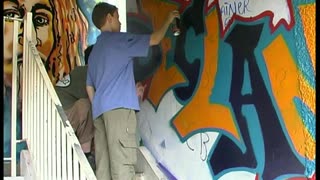 9:29
9:29
Arts Lodge
4 months agoAmazing Street Art Workshops
9 -
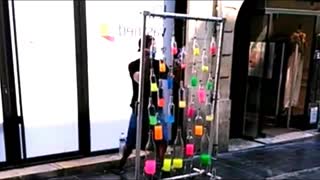 3:18
3:18
ENORM ART BY Monder Talmoudi
2 years ago $0.05 earnedStreet Art is amazing creativity
63 -
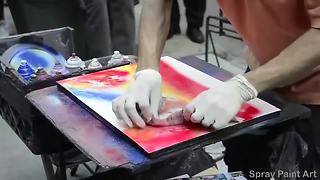 6:28
6:28
ankitladia
5 years ago $2.95 earnedSpray Paint Artist Creates Beautiful Artwork In Minutes
58.3K1 -
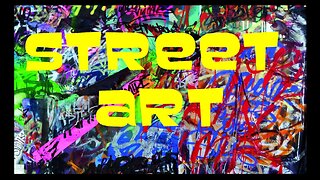 10:15
10:15
FredGielow
1 year agoStreet Art
16 -
 3:01
3:01
StreetArtCentral
1 year agoBest Street Art in New York City
23 -
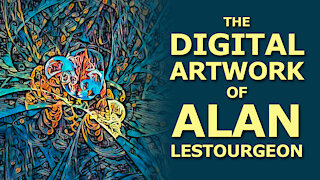 3:09
3:09
WhatIsTruth
3 years ago $0.01 earnedThe Amazing Digital Fine Artwork Of Photographer Alan LeStourgeon
59 -
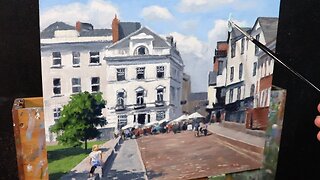 28:05
28:05
Samuel Earp Artist
1 year ago $0.02 earnedHow to Paint an OLD STREET SCENE
538 -
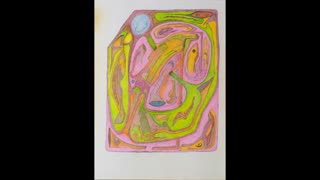 1:11
1:11
artthatlivesattheedgeofchaos
9 months ago $0.02 earnedSymbolic Abstract Art Collection of Drawings and Paintings - Art Collection for Sale - 850-244-5465
1041 -
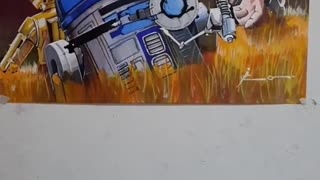 0:42
0:42
wants
2 years agoSuper creative artwork
39